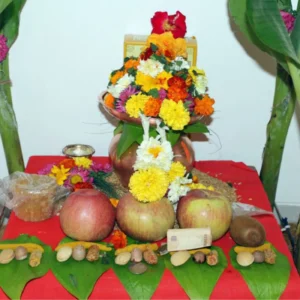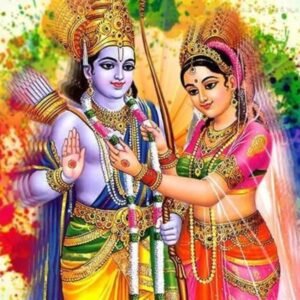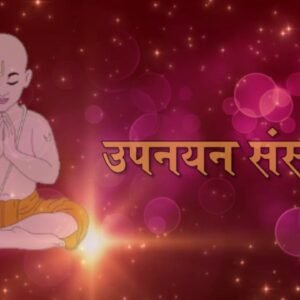Kumbh Vivah Puja Method, Dates, Expenses and Benefits
Kumbh Vivah is a sacred Hindu ritual performed to nullify the effects of Mangal Dosha, a challenging astrological condition believed to impact marital life adversely. This article delves into the intricacies of Kumbh Vivah, shedding light on its significance, rituals, auspicious dates, financial considerations, and the profound benefits it promises to those affected by Mangal Dosha. Understanding this ancient practice provides valuable insights for individuals seeking harmonious and prosperous matrimonial alliances.
Key Takeaways
- Kumbh Vivah is a traditional Hindu ceremony aimed at counteracting the negative implications of Mangal Dosha on marriage.
- The rituals involved in Kumbh Vivah Puja are elaborate, requiring specific preparations, materials, and adherence to prescribed steps.
- Selecting an auspicious date for Kumbh Vivah is crucial and often relies on astrological consultations to determine the most favorable timing.
- Organizing a Kumbh Vivah ceremony entails various expenses, which can be managed effectively with proper budgeting and understanding of the costs.
- The benefits of performing Kumbh Vivah extend beyond the spiritual realm, influencing the overall quality of life and marital happiness of individuals.
Understanding Kumbh Vivah and Mangal Dosha
What is Kumbh Vivah?
Kumbh Vivah is a unique astrological remedy specifically designed for individuals who are affected by Mangal Dosha, a condition in their horoscope that is believed to cause severe complications in marriage.
It is a symbolic marriage ceremony where the Mangal Dosha afflicted person marries a banana tree, a silver or gold idol of Lord Vishnu, or a pot (kumbh) before marrying a human partner.
- The first marriage is with the non-human entity, which is believed to absorb the negative effects of Mangal Dosha.
- The second marriage with a human partner is expected to be free from the obstacles and hardships that were previously foretold.
This ritual is rooted in the belief that the first marriage neutralizes the negative impact and allows the individual to lead a happy and prosperous married life thereafter.
The Concept of Mangal Dosha in Astrology
In Hindu astrology, Mangal Dosha is considered one of the most significant planetary afflictions that can impact an individual’s marital life.
It is believed to be caused by the unfavorable positioning of Mars, known as Mangal, in certain houses of a person’s horoscope. This dosha is often associated with obstacles and difficulties in marriage, leading to disharmony and complications.
Mangal Dosha is not just a spiritual concern but also a social one, as it is taken into account during matchmaking.
Individuals with Mangal Dosha are referred to as ‘Mangliks’ and are often advised to undergo certain remedies to nullify the dosha’s effects before marriage. The severity of the dosha can vary, and it is typically assessed based on Mars’ position in relation to other celestial bodies in the birth chart.
- First House: Self, personality, and appearance
- Fourth House: Happiness, comforts, and mother
- Seventh House: Marriage and partnerships
- Eighth House: Longevity and sudden changes
- Twelfth House: Losses and expenditures
The presence of Mars in these houses is believed to cause specific challenges in the life of the individual, which can be mitigated through rituals like Kumbh Vivah.
The Significance of Kumbh Vivah in Remedying Mangal Dosha
Kumbh Vivah is a significant ritual in Hindu astrology, specifically designed to counteract the negative effects of Mangal Dosha, a planetary condition in a person’s horoscope that is believed to cause marital discord and other life challenges. The ceremony symbolizes a spiritual cleansing and a fresh start for those affected by Mangal Dosha.
The ritual involves a symbolic marriage between the Mangal Dosha-affected individual and a pot (kumbh), which represents the deity or a banyan tree. This is followed by the actual marriage with a human partner, which is considered free of the Dosha’s influence.
By performing Kumbh Vivah, it is believed that the malefic effects of the Dosha are transferred to the pot or the tree, thereby nullifying the Dosha before the person enters into a real marriage.
The benefits of undergoing Kumbh Vivah are manifold, including:
- Reduction in the negative impacts of Mangal Dosha on marital life
- Improved prospects for finding a suitable life partner
- Enhanced harmony and understanding in marital relationships
- Prevention of the potential hardships associated with Mangal Dosha
The Rituals of Kumbh Vivah Puja
Pre-Puja Preparations and Materials Needed
Before the commencement of Kumbh Vivah Puja, certain preparations are essential to ensure the ceremony proceeds smoothly.
Cleanliness is paramount, as it is believed to attract positive energies and create a conducive environment for the rituals. Participants should clean the puja area thoroughly and take a purifying bath before beginning the ceremony.
The materials required for the puja are diverse and hold significant symbolic meaning. Here is a list of the essential items:
- A clay pot (Kumbh) representing the earth element
- Mango leaves and a coconut to adorn the Kumbh
- Sacred thread (Mauli) for tying around the pot
- Flowers and garlands for decoration
- Incense sticks and a lamp for creating a serene atmosphere
- Offerings such as fruits, sweets, and clothes
It is crucial to gather all materials in advance to avoid any disruptions during the puja. The items should be arranged in an orderly fashion, reflecting the sanctity of the occasion.
Following the ritual procedures like invocation, bath, adornment, and prayers is a step-by-step process that guides the participants through the puja. Each step is imbued with deep spiritual significance, mirroring the journey of life and the pursuit of divine blessings.
Step-by-Step Procedure of Kumbh Vivah Puja
The Kumbh Vivah Puja is a detailed ritual that requires meticulous adherence to traditional steps. The ceremony begins with the invocation of Lord Ganesha, believed to be the remover of obstacles, to ensure the puja proceeds without hindrances.
- Ganesh Puja: The ritual starts with a prayer to Lord Ganesha.
- Punyahavachanam: A purification ceremony to sanctify the surroundings.
- Sankalpam: The intention of the puja is declared.
- Mangal Dosha Nivaran Puja: Specific mantras are chanted to appease the planets.
- Vivah Homam: The fire ceremony symbolizing the marriage.
- Purnahuti: The final offering to the fire, marking the completion of the puja.
The essence of Kumbh Vivah lies in the symbolic marriage between the person with Mangal Dosha and a pot (kumbh), which is later released into a body of water. This act is believed to neutralize the negative effects of Mangal Dosha and pave the way for a prosperous marital life.
After the completion of the Homam, the pot is filled with water and the Mangal Dosha Nivaran mantra is recited.
The pot, representing the first spouse with the dosha, is then gently released into a river or pond, signifying the end of the association and the removal of the dosha.
Post-Puja Practices and Traditions
Following the completion of the Kumbh Vivah Puja, there are several post-puja practices and traditions that are considered essential to ensure the full spiritual benefit of the ceremony. These practices are aimed at solidifying the puja’s effects and integrating the positive changes into one’s life.
- The participants are encouraged to share Prasad, the sanctified food, with family and friends to spread the blessings.
- It is customary to donate to the priest and the needy, as an act of charity and gratitude.
- The items used in the puja, such as the clay pot (Kumbh), are to be respectfully disposed of in a holy river or body of water.












Reviews
There are no reviews yet.